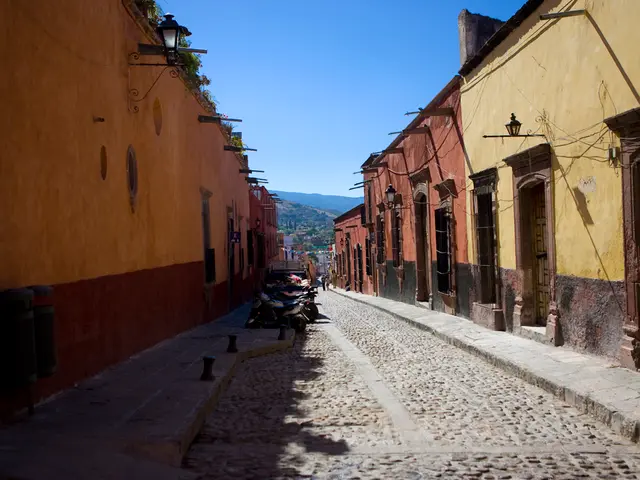Estimating the Amount of Paint Needed to Paint a Car
Transforming your vehicular chariot into a snazzy ride can be as easy as putting on a fresh coat of paint, but figuring out how much of that luscious liquid gold is necessary can make even the most seasoned DIYers' palms sweat. Luckily, this easy-to-digest guide has got you covered, ensuring you've got enough paint to create that smooth, long-lasting finish while saving a dime or ten.
Why Bother Estimating Paint Quantity Accurately?
Apart from stretching those buckets a little further, getting the quantity of paint right is essential for:
- Avoiding hefty mistakes: Uneven coats and color inconsistencies are a surefire way to mess up your masterpiece.
- Spotting a bargain: Purchasing only what you actually need means you won't be left with an unwanted surplus or worrying about running low mid-job.
- Durability: The correct paint thickness ensures your fresh coat sticks to your car like glue, avoiding premature peeling that'll send you back to the garage in no time.
Upgrade Your Paint Stash
Once you've got the lowdown on your car's size and the required surface area, you can move on to choosing the optimal paint system for a seamless finish.
Compact Car (e.g., Honda Civic)
1. Pick Your Particular Paint Scheme
1-1.5 gallons
Varying paint formulas mean different amounts of paint are needed:
150-175 sq ft
- The One-Coat Wonder: Combines both color and clear coat in a single layer, requiring less paint (around one gallon for small cars).
- The multiple-layered marvel: Requires multiple applications (basecoat: 1-1.5 gallons, clearcoat: 0.5-1 gallon).
- The metallic marvel: To achieve that shimmering effect, additional coats may be necessary (add 10-20% more paint).
2. Shine and Protect: The Effects of Application Method
Mid-Size Sedan (e.g., Toyota Camry)
Different application methods affect the quantity of paint needed:
1.5-2 gallons
- The HVLP (High Volume Low Pressure) sprinkler: The most efficient, boasting minimal waste, and a 90% transfer rate.
- The Conventional Spray-Gun Blunderbuss: Squanders more paint, with a 30-40% overspray.
- Brush/Roller Blunderbuss (rare for cars): Consumes more paint but is tricky to apply evenly.
175-200 sq ft
3. Prep with Prime and Protect with Clearcoat
Don't forget to take these essentials into account:
Full-Size SUV/Truck (e.g., Ford F-150)
- Essential for adhesion: 1 gallon typically covers a standard car.
- Adds gloss and protection: 0.5-1 gallon, depending on layers.
2-3 gallons
4. Paints and Coverage Rates: Adjust Accordingly
200-250 sq ft
Various brands have varying coverage rates. Take a gander at the label:
- A Gallon of Standard Automotive Paint: ≈ Covers 100-150 sq ft per coat.
- High-Solid Paints (better coverage) may require 10-15% less.
Large Van/Commercial Vehicle
The Extra Mile: Safety Measures
3+ gallons
Even with careful measuring, unforeseen hiccups can, well, hiccup:
250+ sq ft
- Overspray splash: Wasted paint due to the excessive application of paint.
- Oopsie mistakes: Requiring reapplication.
- Uneven coverage in certain panels: Uneven panels call for extra paint.Ordering 10-20% more paint than calculated ensures you don't run dry mid-job.
Throwing Down Dough for a DIY Paint Job
- Painting-only pocket punch: 100-100-500 (depending on quality).
- Primer and clearcoat drain: 50-50-200.
- Supplies (Spray gun, sandpaper, masking): 200-200-500.
- Total DIY Cost: 300-300-1,500 (versus 2,000-2,000-10,000 for a professional).
Closing Thoughts: Numbers Pave the Way to Perfection
Adequate measuring guarantees that smooth, professional finish you crave without breaking the bank. For small cars, about 1-1.5 gallons is usually enough, while vehicles like trucks will need 3+ gallons. Always double-check manufacturers' specifications, and don't forget to account for primer, clearcoat, and the extra buffer to keep those paint brushes firm and furious.
In addition to saving money by using paint more efficiently, getting the quantity of paint right for your car's paint job is crucial to avoid color inconsistencies, hefty mistakes, and premature peeling. When considering the paint requirements for your home-and-garden projects, such as painting your house or fencing, it's equally important to estimate the correct amount of paint to achieve a satisfactory finish. Additionally, if you're a car enthusiast with a flair for home-and-garden design, you might find yourself juggling both car and home projects, requiring a good understanding of paint quantity estimation for both vehicles and home-and-garden renovations. This way, you can have a smooth, long-lasting finish for your car and a stylish, vibrant home-and-garden décor.








